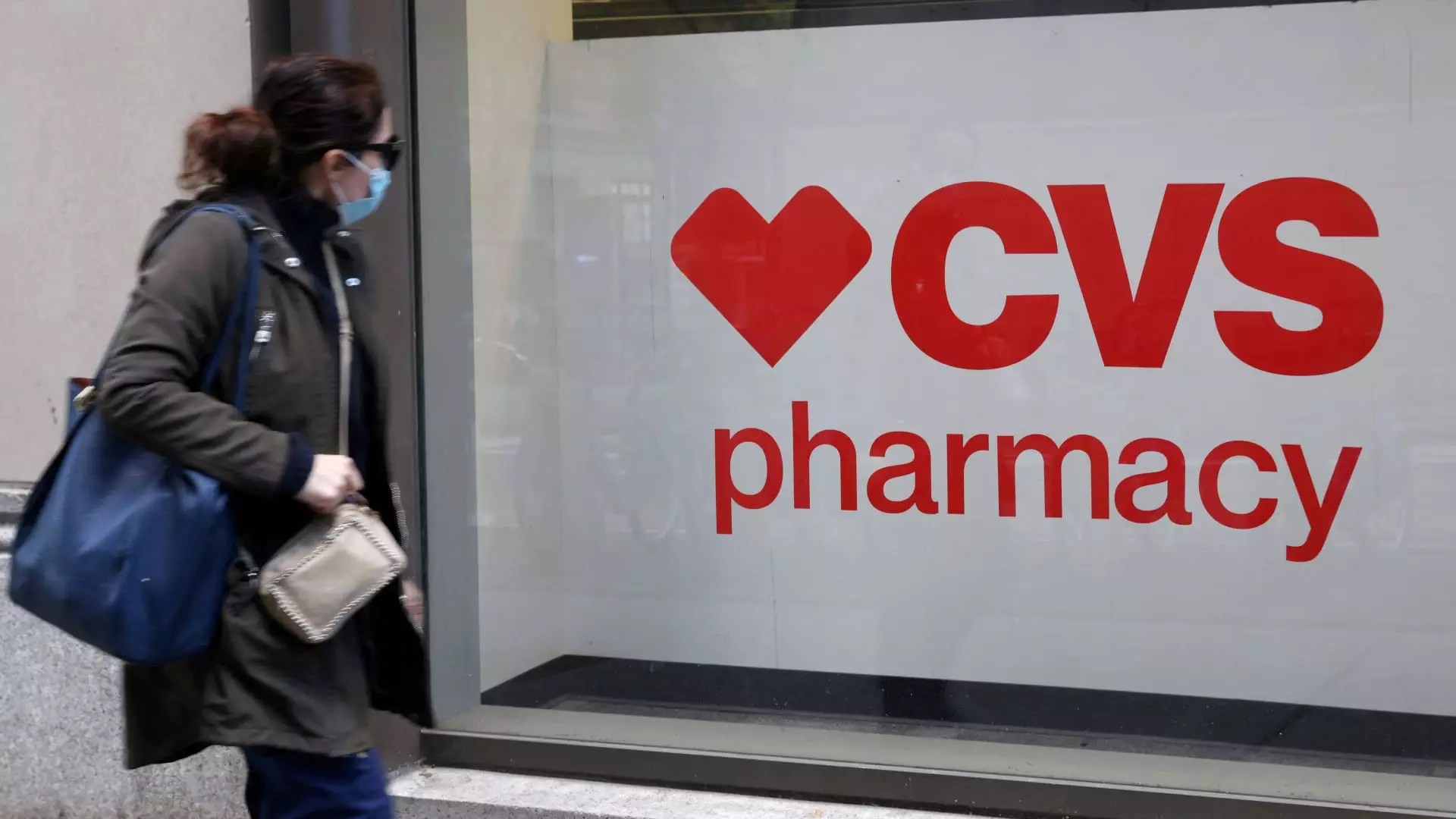CVS Health has emerged from the third quarter of the year facing a complex and challenging landscape, a scenario that underscores the trials facing the healthcare and retail pharmacy sectors. The release of its earnings report revealed a mixed bag of results; while revenue numbers displayed growth, underlying medical costs complicated the overall picture, leading to cautious sentiment among investors. CEO David Joyner, stepping into the role amid these turbulent waters, is tasked with leading the company through turbulent times while restoring confidence to its shareholders.
The timing of Joyner’s first report as CEO could not be more poignant. Analysts and investors looked for signals of recovery and stability, but what they found was a cautious outlook that reflects broader challenges within the healthcare space. CVS reported adjusted earnings per share of $1.09, significantly below Wall Street’s expectation of $1.51. Despite this setback, total revenue increased to $95.43 billion, beating expectations of $92.75 billion. Herein lies the crux of CVS’s struggle: while the company’s operations are generating significant revenue, the increasing medical costs, particularly within its Aetna health insurance segment, are undermining profitability.
The medical benefit ratio sorely highlighted this imbalance, escalating to 95.2% from 85.7% a year ago. This metric indicates that a rising share of collected premiums is being consumed by medical expenses, essentially eroding profit margins. Such a trend raises questions about the effectiveness of CVS’s pricing strategies and risk management processes, spotlighting vulnerabilities specifically in its insurance unit.
Investors have grown wary of CVS’s stock, which has plummeted nearly 27% over the past year. The erosion of confidence is largely attributed to a trifecta of guidance cuts, rising medical costs, and increasing pressure from activist investors. Joyner articulated the challenge succinctly, noting that CVS’s impact from the post-pandemic healthcare landscape has been more severe than anticipated. Increasing hospital visits among seniors—reflecting a backlog of care delayed during the COVID-19 pandemic—have added stress to the insurance unit, illustrating how external factors can significantly affect this complex business model.
Moreover, Joyner is not alone in shouldering the burdens of revitalizing the company’s perceived stagnation. The appointment of Steve Nelson as president of Aetna signals a clear directive to enhance operational resilience. Nelson’s past leadership at UnitedHealthcare brings a wealth of experience, suggesting CVS may be seeking to recalibrate its strategy in the face of growing competition and operational challenges.
CVS is attempting to navigate through these turbulent waters with significant operational changes. The company has undertaken a strategic review that has resulted in planned layoffs, write-downs, and a considerable closure of underperforming stores. Such moves, while painful, might be necessary for CVS to streamline operations and focus on core business areas.
Further complicating the recovery path are the restructuring charges, which totaled $1.17 billion in the third quarter. While painful, such charges reflect the company’s commitment to reposition itself; however, they also indicate a deeper rethink of its strategic positioning within the industry. The pressure to generate cost savings—more than $2 billion over the coming years—is indicative of a business in transition, searching for profitability in a landscape marked by rising operational costs and intensifying competition.
Looking ahead, CVS indicates that the strain from elevated medical expenses will persist in the immediate future. This caution is reflected in their decision to avoid providing formal guidance, which has historically served as a foundation for analyst expectations. Joyner’s focus on establishing credibility and trust appears paramount as CVS positions itself for potential recovery; however, bolstering investor relations requires consistent execution of promises regarding returns.
Of note are the premium deficiency reserves, which will likely play a significant part in Q4 results and beyond. CVS’s expectations for a substantial release of these reserves suggest a strategic focus on optimizing future profits, but this will need to be closely monitored. Furthermore, how CVS navigates issues such as pharmacy reimbursement pressures and the complexities associated with new drug launches will be crucial determinants of its performance trajectory.
As CVS Health embarks on a fresh chapter under new leadership, the road to recovery and stability will require a fine balance of vigilance and strategic agility. Key decisions surrounding restructuring, management changes, and operational improvements are already being set in motion, but it will take time and concerted effort to restore investor trust and stabilize the business. The company’s ability to adapt to changes in market dynamics, while managing the delicate operational intricacies of healthcare, will ultimately determine its future success. The upcoming quarters will be pivotal as CVS navigates through these challenges, aiming not just for survival, but for renewed vitality in a competitive landscape.

